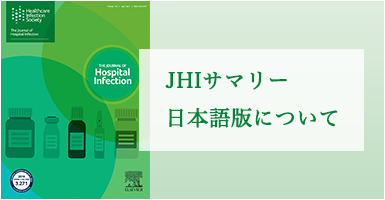入院患者のクロストリジウム・ディフィシル(Clostridium difficile)感染の自動判定システム★
Automated system to identify Clostridium difficile infection among hospitalised patients
Y. Yadav*, K.W. Garey, T.K. Dao-Tran, V. Kaila, K.Y.E. Gbito, H.L. DuPont
*University of Texas School of Public Health, USA
Journal of Hospital Infection (2009) 72, 337-341
本研究の目的は、電子的に収集した排便頻度に関するデータに基づいて、クロストリジウム・ディフィシル(Clostridium difficile)感染に対する高リスク患者を判定できるかどうかを評価することである。1日あたりの排便回数および下痢の日数について、下痢の報告があった全患者を前向きに評価した。C. difficile検査の要請は、研究担当者とは無関係に実施した。下痢の日数と非固形便の最大回数をC. difficile感染の予測因子として評価した。合計605例の患者が下痢の症状ありと判定され、このうち64例(10.6%)がC. difficile感染と診断された。単変量解析では、排便の最大回数および下痢の日数とC. difficile感染のリスク上昇との関連が認められた。1日あたりの下痢の回数が3回の患者はC. difficile感染発生率が6.3%であったのに対して、4回以上の患者では13.4%に上昇した[オッズ比(OR)2.3、95%信頼区間(CI)1.3~4.2、P = 0.0054]。また、下痢の日数が1日の患者はC. difficile感染発生率が6.3%であったのに対して、2日の患者は17.4%(OR 3.1、95%CI 1.7~5.6)、3日以上の患者は27.1%(OR 5.5、95%CI 2.6~11.7)に上昇した。これらの結果をロジスティック回帰によって検証したところ、下痢の日数が最も重要な予測因子であることが判明した。電子データ収集技術を用いることにより、下痢の日数と24時間の下痢の最大回数によってC. difficile感染の高リスク患者集団の判定が可能であった。
サマリー 原文(英語)はこちら
監訳者コメント:
電子カルテが導入されている施設では、下痢の回数を電子的に監視することは可能であろう。施設によっては、より少ない労力でより効果的なC. difficile感染の監視につながる方法であると言える。
同カテゴリの記事
Control of an ACC-1-producing Klebsiella pneumoniae outbreak in a physical medicine and rehabilitation unit
Infectious gastroenteritis and the need for strict contact precaution procedures in adults presenting to the emergency department: a Danish register-based study
Sensitivity and specificity of the user-seal-check in determining the fit of N95 respirators
Evaluation of a bipolar ionization device in inactivation of antimicrobial-resistant bacteria, yeast, Aspergillus spp. and human coronavirus I. Kanesaka*, A.K. Katsuse, H. Takahashi, I. Kobayashi *Toho University, Japan Journal of Hospital Infection (2022) 126, 16-20
Surveillance of healthcare-associated infections in Indonesian hospitals
サイト内検索
アーカイブ
-
2024年
- ・ 1月(24)



